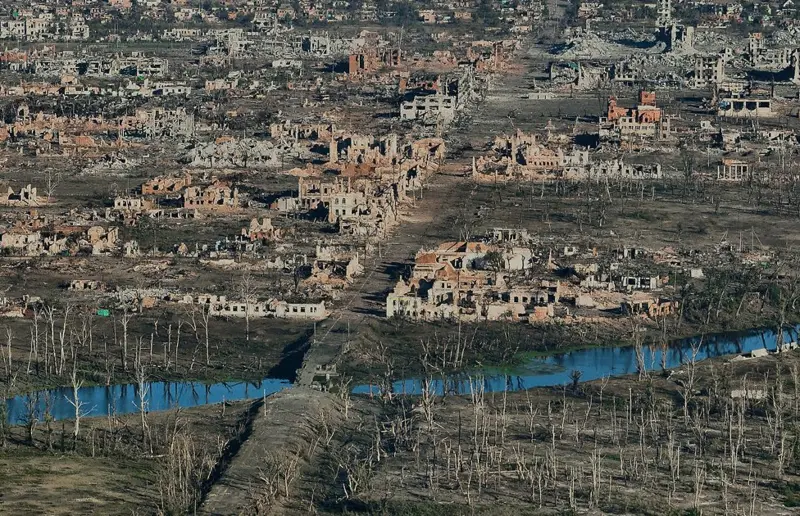Try reading and actually responding to the subject matter, or are you too much of an inbred putz to grasp complicated subjects.
Ever wonder why Ukraine is a complete shit hole.
Ukraine is a middle-income country. Its GDP per capita is somewhere around $13000, which is similar to Libya or Paraguay. That’s not terrible, but what is terrible is how Ukraine has stagnated since the fall of the Soviet Union. By the World Bank’s reckoning, Ukraine is about 20% poorer now than it was in 1990!
If Ukraine had experienced growth similar to that of Poland or Romania since the fall of communism, it would now have a GDP in the $30,000-$35,000 range, and would essentially be a developed country. Even if it had only managed to match Belarus’ performance, it would be half again as rich as it is now. As things stand, Ukraine’s economic failure has left it less capable of defending itself. It also might have made Russia’s public more likely to support intervention in Ukraine, as Putin’s portrayal of Ukraine as a basket case has been a key part of his justification for aggression.
So why did this happen? Why has Ukraine failed economically? One obvious culprit is the war itself, which since 2014 has chilled foreign investment and forced the government to divert resources toward the military. In my over view of Warsaw pact countries, I concluded that Rule #1 for economic development was not to piss off Vladimir Putin. But looking at the graphs above, it’s very clear that that can’t be the whole story, because Ukraine’s problems began well before 2014.
So let’s break those problems down by time period. Essentially, we need to ask why Ukraine’s GDP fell by so much in the 90s, and why it failed to climb faster between 2000 and 2014.
In general, the rule for countries is that they’re poor until something happens to make them rich. Thus, many disappointing growth stories (Pakistan) can be explained simply by a lack of pro-development policy. But with Ukraine that’s not quite true. Looking at the graphs above, we can see that although all of the Eastern Bloc countries suffered some kind of economic damage from the collapse of communism, Ukraine suffered the worst — even worse than Russia or Belarus. Why?
One reason was hyperinflation. This afflicted most of the post-communist countries, but was worst in Ukraine. In Russia, inflation peaked at around 2500% in 1992, and in Belarus at around 2200% in 1994, but in Ukraine it hit 10,000% in 1993. It’s not clear why this was higher; Ukraine’s budget deficit was actually slightly lower than Russia’s, and all of these countries were financing their borrowing via money creation (generally believed to be the thing that sparks hyperinflation). One possibility is corruption; special interest groups in Ukraine were more powerful than elsewhere, and threatened to block fiscal consolidation. But in any case, macroeconomics seems to have dealt Ukraine a particularly severe blow.
Microeconomics probably hurt it as well. The Soviet economy was really bad at manufacturing, but wasn’t that terrible at extracting natural resources, which is why the resource-dependent Central Asian countries didn’t suffer as much from the fall of the USSR as their counterparts in East Europe. Russia has a lot of natural resources, so it was sort of halfway between East Europe and Central Asia in this regard. But Soviet Ukraine’s economy was more dependent on manufacturing, so it probably suffered more from the collapse of the inefficient Soviet system. As for Belarus, it actually kept much of its soviet manufacturing going; it wasn’t very efficient, but Russia did it a big favor by continuing to buy its goods and give it cheap fuel. Ukraine proceeded with shock therapy, and in proportional terms it had the most to shock.
So that pretty much answers the question of why Ukraine took such a huge hit in the early and mid 1990s. But by 2000 the macroeconomic situation had stabilized and shock therapy had run its course and Ukraine started to grow again. Why didn’t it grow faster?
In my series of posts about economic development, I’ve tried to analyze each country through the lens of what I call the Chang-Studwell model of industrial policy. This model was laid out by the economist Ha-Joon Chang and the author Joe Studwell in the 2000s and 2010s, though they weren’t the first to think of most of the ideas therein. One core idea is that
exporting manufactured goods is the best way to boost a country out of poverty. Countries that specialize in resource extraction or agriculture, or which fail to make their products competitive in global markets, tend to fall behind in the development race. This is especially true for a country like Ukraine, which lacks Russia’s rich endowments of oil, gas, and other natural resources.
So when I think about a country’s development, the first thing I do is go to the OEC and look at what a country exports.
Do this exercise for Poland, Romania, or Turkey — three countries that have enjoyed rapid growth and are now on the cusp of developed-country status — and you’ll see that they all export a lot of cars car parts and some electronics, with Germany and the other rich countries of Europe as their biggest markets. I’ll write a post about these countries later, but basically it looks like they’ve become a sort of Tennessee/Kentucky for Europe — a cheap zone for high-value manufacturing.
But look at Ukraine, and we see that it mostly exports very basic, simple, low-value stuff — food, metals, and minerals.
Manufacturing itself comprises a lower percent of GDP in Ukraine (10%) than in Poland, Romania, and Turkey (16-19%).
It’s clear that Ukraine missed a key opportunity here. From 2000 to 2014, having weathered the worst of the post-Soviet crisis, Ukraine might have been able to hop on the same growth train that Poland, Romania, and Turkey were on. This could have resulted in faster growth during those years, and it might also have made Europe more willing to defend Ukraine from Russian attack (in order to protect its investments). So I think it’s worth asking why this didn’t happen.
The report draws a strong contrast between Ukraine and Poland where very strong manufacturing FDI from Germany etc. was a key part of the growth story.
Maybe the rich countries of Europe simply had a limited amount of investment capital, which they focused on countries that were a little more advantageous than Ukraine. Maybe in a few years, if war with Russia hadn’t broken out, costs in Poland, Romania, and Turkey would have risen and manufacturers would have migrated to Ukraine in search of cheaper labor (the flying geese theroy).
But it’s still worth asking why Ukraine wasn’t as attractive of a manufacturing platform as the other countries. Being part of the EU would have helped, certainly, but Turkey didn’t join the EU, so that can’t be the whole story. Basically, there are two main categories of explanations here:
- Macroeconomic mistakes and bad luck
- Corruption and institutional failure
Before writing this post I read a bunch of narrative reviews of Ukraine’s economy since 1991; the best one I found was this 2012 article from the Carnegie Endowment for International Peace. One factor it emphasizes is that in the 2000s, Ukrainian policy tended to reserve manufacturing industries for domestic oligarchs — most of whom had gotten rich by owning Ukraine’s old inefficient Soviet-era manufacturing industries. It thus tried to discourage foreign investment in the manufacturing sector — a huge, tragic mistake. The oligarchs didn’t do much with Ukraine’s manufacturing sector; they just kept collecting their checks and allowed the sector to slowly decline. Meanwhile, the country’s leaders encouraged foreign investment in sectors like finance and real estate. That’s very visible on the graph in the previous section.
Unfortunately, this probably killed Ukraine’s chances to use the Chang-Studwell model of development in the 2000s. It created a huge, bloated financial sector — a development no-no. And it also set Ukraine up for a huge disaster, because finance and real estate were the industries that got clobbered in the Global Financial Crisis of 2008. Take a look at the growth graph at the beginning of this post, and you’ll see that after 2008,
Ukrainian growth flatlines utterly while Russian, Belarusian, Romanian and Polish growth quickly resumes (or in Poland’s case, doesn’t even pause!).
But Ukraine also hit another big shock right around this same time: The end of cheap Russian gas. In Soviet times Russia had piped cheap gas to Ukraine to subsidize the area’s inefficient heavy industry, and this policy basically continued after 1991. But from 2007 through 2009, Russia mostly ended this deal, raising the prices Ukraine would have to pay for gas. This dealt a blow to Ukraine’s inefficient, oligarch-controlled manufacturing sector. In 2010 the cheap gas subsidy was partly restored when Ukraine elected a pro-Russian president (Yanukovych) who negotiated a new discount. But of course that ended in 2014 when Yanukovych was ousted and the war began.
So Ukraine made a big mistake in its FDI policy, which left it vulnerable to the twin shocks of the global financial crisis and the end of cheap Russian gas.
The other factor that everyone mentions when it comes to Ukraine’s poor performance is corruption. This is hard to measure (it mostly relies on subjective impressions), but everyone seems to agree it’s a problem. Ukraine’s economy, like Russia’s, is particularly dominated by rich oligarchs:
This creates several problems. First, as the Carnegie article points out, it makes it hard to raise tax revenue, which forces tax rates to be higher, which forces much of the economy off the books. In 2014, Ukraine’s shadow economy was estimated to comprise 50% of the total
l. That in turn encourages a pervasive culture of bribe-taking and extralegal means of property protection and contract enforcement (i.e. organized crime), which exacts its own toll on the economy in myriad ways.
Oligarchs’ political power can also prevent good industrial policy, as we saw with the case of FDI policy during the 2000s. What’s good for enriching the country is not always the same as what’s good for enriching oligarchs.
Official corruption also inhibits good governance. The Yanukovych administration is thought to have been especially corrupt, with tens of billions vanishing from government coffers during his rule. Those kinds of “rents” reduce the leadership’s incentive to invest in public goods; why build roads and schools and export industries to make your country rich, when you can just raid its treasury to enrich your own family and depend on Russia for protection?
Now, of course, Russia is no longer providing protection — quite the opposite — and Ukraine’s government, pressed by the urgency of national unity in the face of external threat, is making some attempts to reign in the entitled barons. But it’s going to be slow going.
SO WHAT CAN UKRAINE DO???
Nothing, these idiots are fucked. They are slowly imploding on them selves and pissing off the entire world. Hope fully the online trolls will stop fucking up this forum, get to the front and eat a FAB 500.






